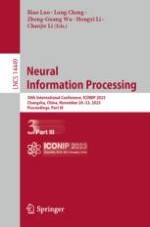2024 | OriginalPaper | Chapter
A Hip-Knee Joint Coordination Evaluation System in Hemiplegic Individuals Based on Cyclogram Analysis
Authors : Ningcun Xu, Chen Wang, Liang Peng, Jingyao Chen, Zhi Cheng, Zeng-Guang Hou, Pu Zhang, Zejia He
Published in: Neural Information Processing
Publisher: Springer Nature Singapore
Activate our intelligent search to find suitable subject content or patents.
Select sections of text to find matching patents with Artificial Intelligence. powered by
Select sections of text to find additional relevant content using AI-assisted search. powered by
